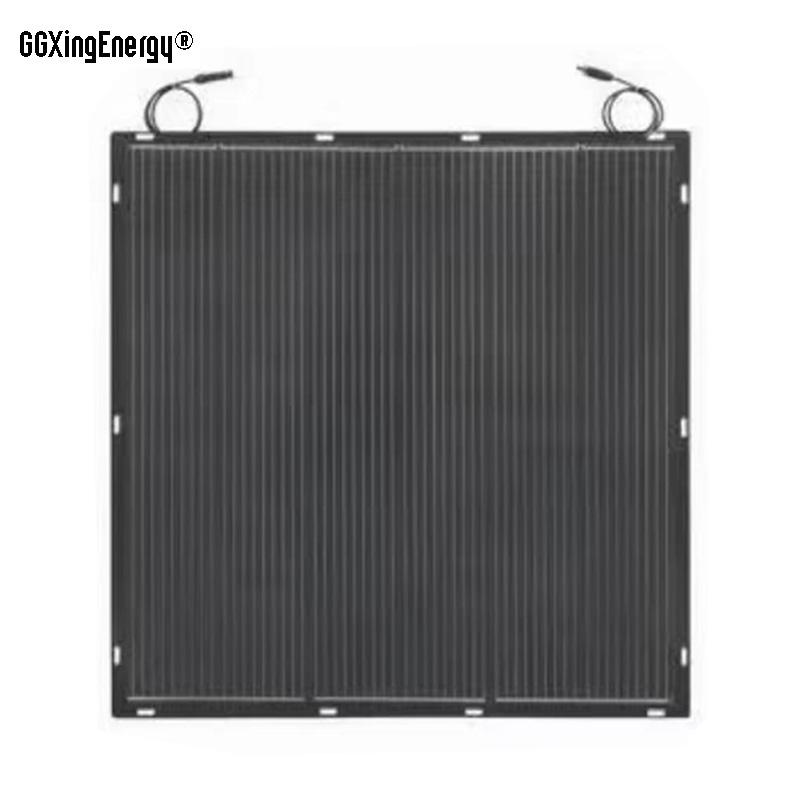The Power of Flexible Solar Panels: A Game-Changer in Renewable Energy
2025-04-08
As the world continues to embrace renewable energy sources, solar power has emerged as one of the most popular and sustainable solutions. Traditional solar panels, which are typically rigid and bulky, have paved the way for the newer, more innovative technology: flexible solar panels. These lightweight, versatile, and durable alternatives are transforming the solar energy landscape, offering a variety of benefits for both residential and commercial applications. In this blog, we will dive into what flexible solar panels are, their advantages, applications, and why they are considered the future of solar energy.
What Are Flexible Solar Panels?
Flexible solar panels are solar cells that can be bent, rolled, or molded to fit various surfaces. Unlike traditional rigid solar panels that are made from glass or silicon, flexible solar panels are typically constructed using thin-film technology, which allows them to be lightweight and flexible. These panels are made using materials such as cadmium telluride (CdTe), amorphous silicon, or copper indium gallium selenide (CIGS), which can be applied to flexible substrates like plastic or metal foils.
The ability to conform to different shapes and surfaces without compromising efficiency makes flexible solar panels an exciting innovation in the solar power industry. While they might not be as efficient as traditional solar panels in terms of power output, their flexibility and ease of integration into various environments make them highly attractive.
Key Benefits of Flexible Solar Panels
1. Lightweight and Portable: One of the standout features of flexible solar panels is their lightweight design. Traditional solar panels can be heavy and difficult to transport, especially for small-scale or portable applications. Flexible solar panels, on the other hand, are much lighter, making them easy to handle and install, even in remote locations or on smaller structures.
2. Durability and Flexibility: Flexible solar panels are designed to be durable and resistant to various environmental factors. Their ability to bend and flex without breaking or cracking is an important advantage, especially for installations on curved surfaces, such as vehicles, tents, or portable power systems. They are also less prone to damage from vibrations, which makes them ideal for use in mobile applications like RVs, boats, or off-grid living.
3. Aesthetic Integration: The versatility of flexible solar panels extends to their ability to blend seamlessly into different environments. Traditional solar panels are often bulky and conspicuous, whereas flexible solar panels can be integrated into surfaces like roofs, windows, or walls without disrupting the aesthetics of a building or structure. This makes them an excellent option for homeowners or businesses looking to embrace solar power without compromising the design of their property.
4. Easy Installation: Flexible solar panels are easier to install than traditional panels, especially on surfaces that are unconventional or difficult to work with. Since they can be applied to curved or irregular surfaces, the installation process is more straightforward and less intrusive. Some flexible panels even come with adhesive backing, allowing users to simply peel and stick the panel to a desired location, making them perfect for DIY installations.
5. Cost-Effective: While flexible solar panels may not offer the same energy efficiency as traditional panels, they can still be a cost-effective option for certain applications. Their lower manufacturing costs and ease of installation can result in reduced overall expenses, especially in cases where space is limited, or a large number of panels are required for a specific project.
Applications of Flexible Solar Panels
Flexible solar panels are being used in a wide range of applications across various industries, from residential to commercial and even specialized uses. Here are some of the most popular applications:
1. Mobile Applications: Flexible solar panels are particularly useful in mobile applications where space is limited, and the weight of traditional solar panels would be a hindrance. RVs, boats, and caravans are ideal examples where flexible panels can be integrated into the roof or exterior, providing a reliable source of energy without taking up valuable space or adding significant weight.
2. Off-Grid Power Solutions: For remote or off-grid locations, flexible solar panels offer a portable, easy-to-install solution for generating electricity. Whether it’s for powering small devices, lighting, or backup power systems, flexible panels can be a reliable energy source in locations without access to the power grid.
3. Wearable Solar Technology: The lightweight and flexible nature of these panels has led to their use in wearable solar technology. Portable chargers, solar-powered backpacks, and even clothing integrated with solar panels are becoming more common. These innovations allow individuals to harness solar energy on the go, providing an eco-friendly power solution for personal devices like phones, cameras, and tablets.
4. Building-Integrated Photovoltaics (BIPV): Flexible solar panels can be integrated directly into the architecture of buildings. They can be installed on roofs, windows, and facades, blending with the building’s design while generating renewable energy. This application is particularly useful for urban areas where space is limited, and traditional solar installations may not be feasible.
5. Solar-Powered Gadgets and Accessories: Flexible solar panels are increasingly being used to power small electronic gadgets and accessories. From solar-powered chargers for phones and laptops to solar lights and garden tools, flexible solar panels are becoming a reliable power source for portable devices.
The Future of Flexible Solar Panels
The future of flexible solar panels looks promising as technology continues to advance. While they are currently less efficient than traditional rigid panels, ongoing research and development in materials science and photovoltaic technology are expected to improve their efficiency and power output. Additionally, the potential for integration into everyday products and structures, from clothing to vehicles to buildings, opens up a wide range of possibilities for solar energy use.
Flexible solar panels are also expected to play a significant role in the global push for sustainability and the reduction of carbon emissions. Their adaptability and ease of integration into a variety of environments make them a powerful tool in promoting clean energy, especially in areas where traditional solar panel installations may not be practical.
Conclusion
Flexible solar panels represent a leap forward in solar technology, offering an innovative and versatile way to harness the power of the sun. Their lightweight, durable, and aesthetic appeal make them ideal for a wide range of applications, from mobile power solutions to building-integrated photovoltaics. While they may not yet rival traditional solar panels in efficiency, their flexibility, portability, and potential for integration into everyday products make them a game-changer in the renewable energy industry.
As technology continues to evolve, flexible solar panels are poised to become an even more prominent player in the quest for sustainable energy solutions. Whether you’re looking to power your RV, reduce your carbon footprint, or integrate solar energy into your building’s design, flexible solar panels provide a practical and forward-thinking solution for the energy needs of tomorrow.



